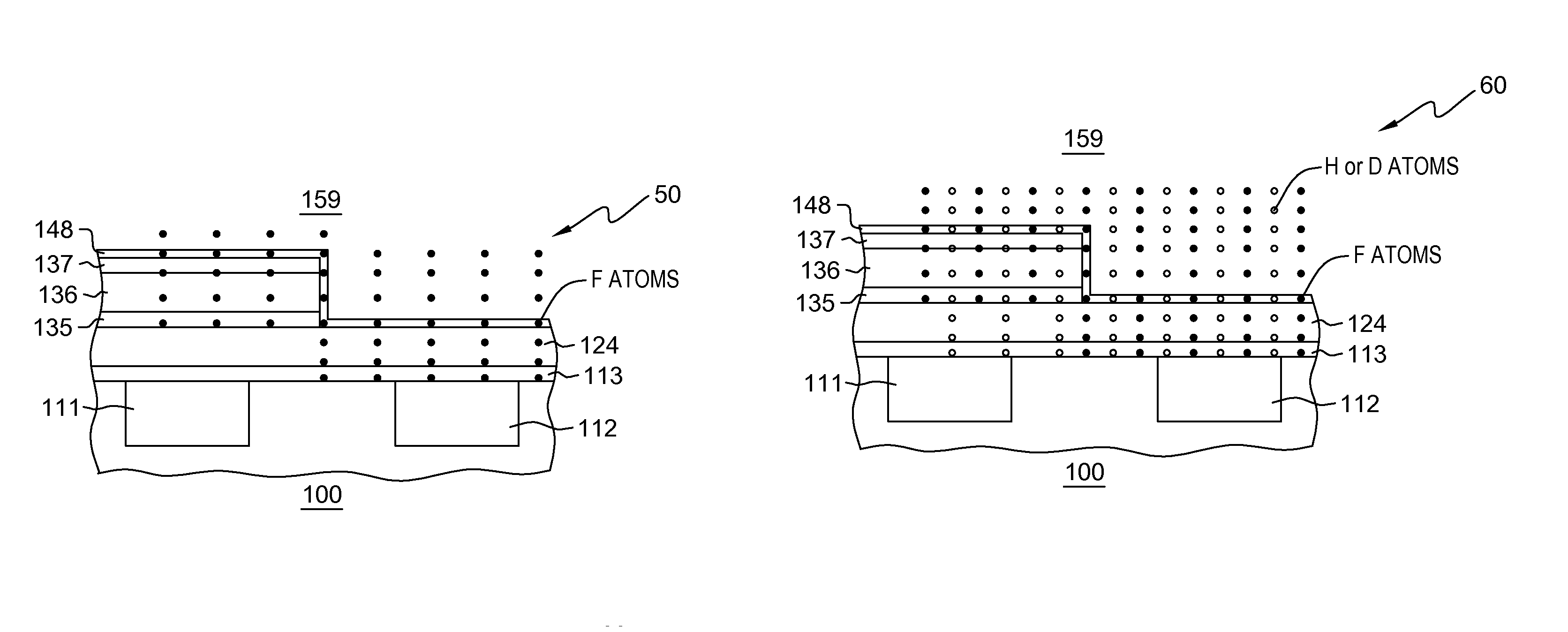Forming a semiconductor structure for reduced negative bias temperature instability
a technology of temperature instability and semiconductor structure, applied in the field of semiconductor technology, can solve the problems of adversely affecting the stability of transistors formed with thinner gate dielectric materials, the scaling of the semiconductor device to smaller feature sizes is facing significant challenges, and the traditional semiconductor materials and process for device formation become less effective, so as to improve the negative bias temperature instability
- Summary
- Abstract
- Description
- Claims
- Application Information
AI Technical Summary
Benefits of technology
Problems solved by technology
Method used
Image
Examples
Embodiment Construction
[0020]Detailed embodiments of the claimed structures and methods are disclosed herein. The method steps described below do not form a complete process flow for manufacturing integrated circuits. The present embodiments can be practiced in conjunction with the integrated circuit fabrication techniques currently used in the art, and only so much of the commonly practiced process steps are included as are necessary for an understanding of the described embodiments. The figures represent cross-section portions of a semiconductor chip or a semiconductor wafer during fabrication and are not drawn to scale, but instead are drawn to illustrate the features of the described embodiments. Specific structural and functional details disclosed herein are not to be interpreted as limiting, but merely as a representative basis for teaching one skilled in the art to variously employ the methods and structures of the present disclosure. In the description, details of well-known features and technique...
PUM
 Login to View More
Login to View More Abstract
Description
Claims
Application Information
 Login to View More
Login to View More - R&D
- Intellectual Property
- Life Sciences
- Materials
- Tech Scout
- Unparalleled Data Quality
- Higher Quality Content
- 60% Fewer Hallucinations
Browse by: Latest US Patents, China's latest patents, Technical Efficacy Thesaurus, Application Domain, Technology Topic, Popular Technical Reports.
© 2025 PatSnap. All rights reserved.Legal|Privacy policy|Modern Slavery Act Transparency Statement|Sitemap|About US| Contact US: help@patsnap.com



